9 Vines That Grow in Shade (with Pictures)
-
Kristin Hitchcock
- Last updated:
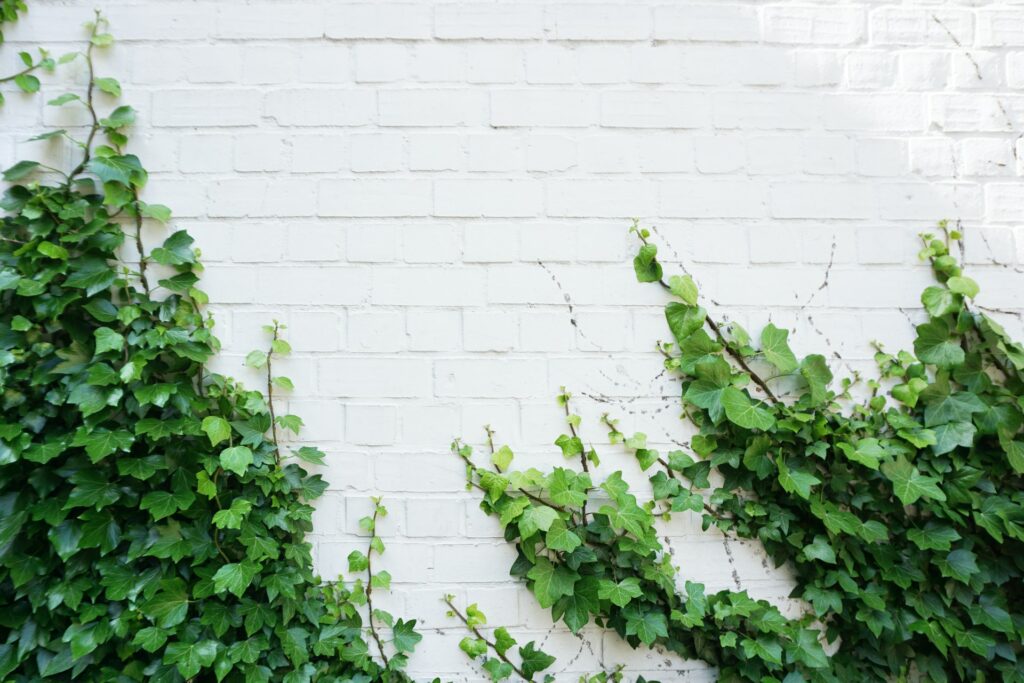
Vines can be an easy way to add some greenery to your yard and garden. Most vines grow prolifically and can add green to places that other plants just can’t. For instance, vines are a great option for walls and roofs—where other plants can’t reach.
However, growing vines in the shade can be challenging, though not necessarily as challenging as other plants. Luckily, there are several vine species that are made to grow in the shade. (After all, many vines naturally grow in the shades of trees.)
Beyond that, choosing which shady vine species works best in your yard depends on a number of factors. Take a look at the species below to help you decide.
The 9 Vines that Grow in Shade
1. Boston Ivy

| USDA Zones: | 4 to 8 |
| Sun Needs: | Full sun to partial shade |
While Boston ivy does need some sun, it does well in partially shady areas. For the most part, this ivy is grown for its foliage, which is well-loved by many gardeners. It easily scales walls and creates a fun surprise when it turns bright red in the fall. Plus, the deep green leaves are also attractive in the summer.
This plant does do best when in ample sunlight, especially in the fall. However, if you decide to grow it in the shade, it still produces a lovely green color in the summer months.
2. Climbing Hydrangea

| USDA Zones: | 4 to 9 |
| Sun Needs: | Full shade to partial shade |
Climbing Hydrangeas are extremely slow-growing, unlike other vines. However, they produce beautiful flowers that are unmatched by many. They also grow easily in full shade and climb walls. When you give them the time, they can fill a whole wall with tiny white flowers.
With that said, this vine is actually quite heavy. Therefore, they really do need a wall or another stable structure to thrive.
3. Virginia Creeper
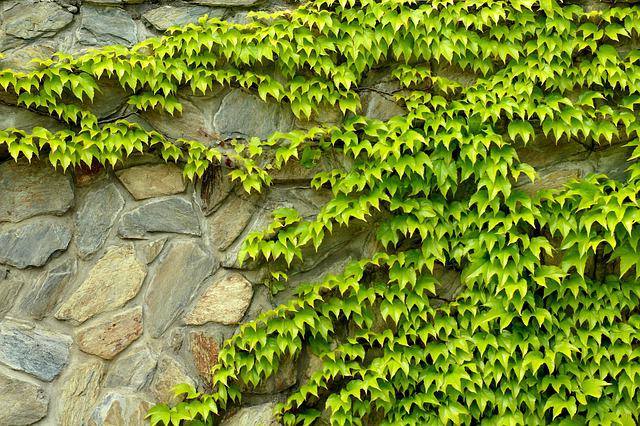
| USDA Zones: | 3 to 10 |
| Sun Needs: | Full sun to partial shade |
If you live anywhere in the south, you’ve probably noticed Virginia creeper a number of times. In fact, it is often mistaken for poison ivy. (However, poison ivy has three leaves, while Virginia creeper has five.} This vigorous grower can easily coat whole trees and structures. In the fall, it turns a bright red color, which is how it won the name “Red Wall” by many gardeners.
Its bright red color does best when it is exposed to full sunlight. However, it will still turn red when kept mostly in the shade. It is a hardy little plant that can grow in poor soils.
4. Japanese Climbing Hydrangea

| USDA Zones: | 5 to 9 |
| Sun Needs: | Full shade to partial shade |
Like other climbing hydrangeas, the Japanese Climbing Hydrangea takes a bit to get growing. Therefore, it works well if you’re worried about the vine completely overtaking your garden. This one won’t. It has large flowers that get up to 10 inches, though, which is one reason why it is so popular.
With that said, you won’t end up with a wall of flowers for some time, so be sure that you have patience before planting this vine. You can find white-flowered and pink-flowered versions, though white is the most common.
5. Vinca Minor
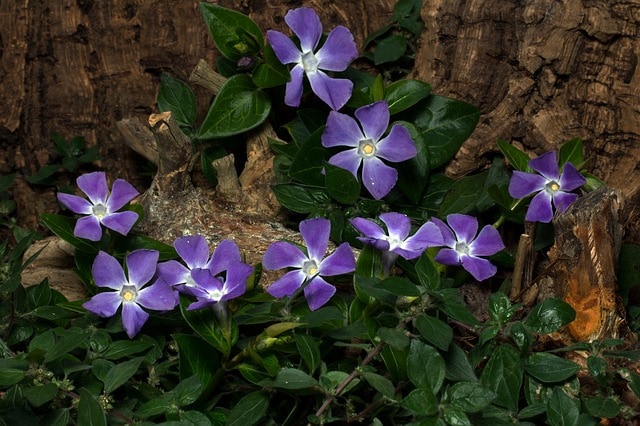
| USDA Zones: | 4 to 9 |
| Sun Needs: | Full shade to partial shade |
Vinca Minor has been known to be invasive, so many gardeners are worried about it overtaking other plants. But it is actually pretty easy to take care of in most situations, as long as you trim it back regularly.
As a hardy plant, we recommend growing periwinkle under trees where other plants have a hard time. It can also function as a drought-resistant ground cover for dryer places. While it is a vine, it is not a climber so it will not climb walls or other structures. However, it is a shade-hardy ground cover that can be utilized where grass cannot be grown.
6. Clematis
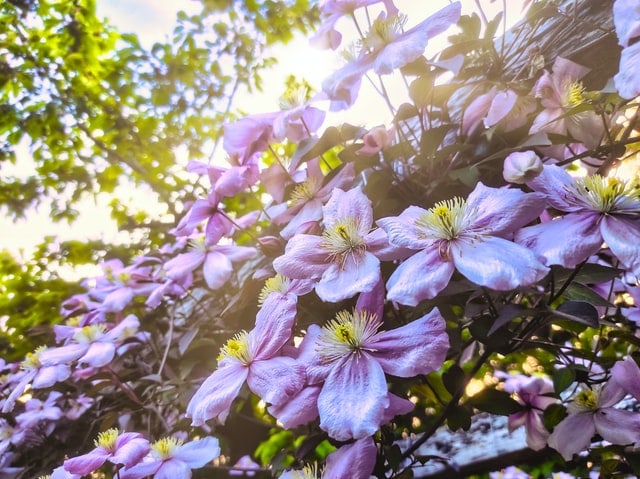
| USDA Zones: | 3 to 9 |
| Sun Needs: | Partial shade |
Clematis is not as easy to grow as other options out there but it does produce beautiful flowers that many gardeners consider worth it. There are over 20 varieties as well, so there are many colors and sizes to choose from. All varieties do good in partial shade, though many won’t bloom in full shade.
This plant is labeled as invasive in some areas, so you have to be careful with how quickly it spreads. It can overtake a garden easily, so we do not recommend it for those looking for a low-maintenance option.
7. Variegated Kiwi Vine
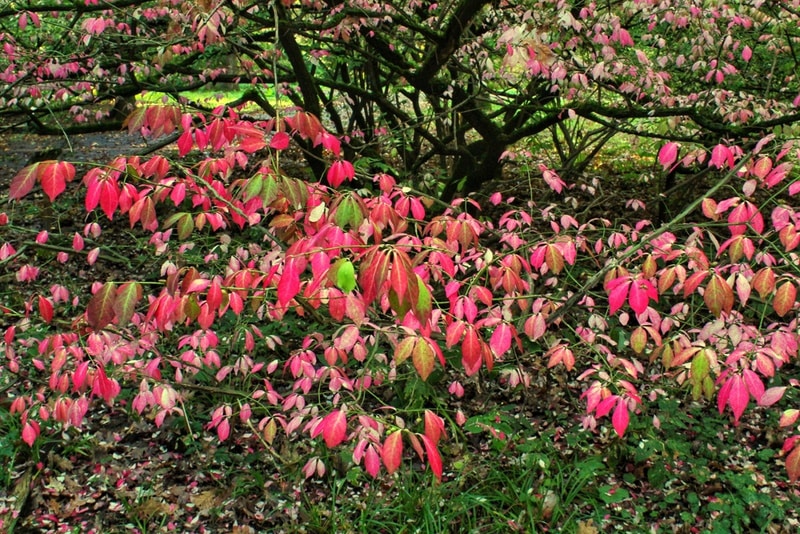
| USDA Zones: | 3 to 8 |
| Sun Needs: | Partial shade |
Out of all the plants on this list, the kiwi vine is easily one of our favorites. Its leaves are a spectacular display of green, white, and pink. It looks like someone splashed paint all over them! They also produce white flowers, but most people grow them for their foliage.
This is one of the few vines that have both male and female plants. You’ll need both if you want them to fruit and possibly spread. Males are usually more colorful than females, so many gardeners just plant them.
8. Sweet Autumn Clematis
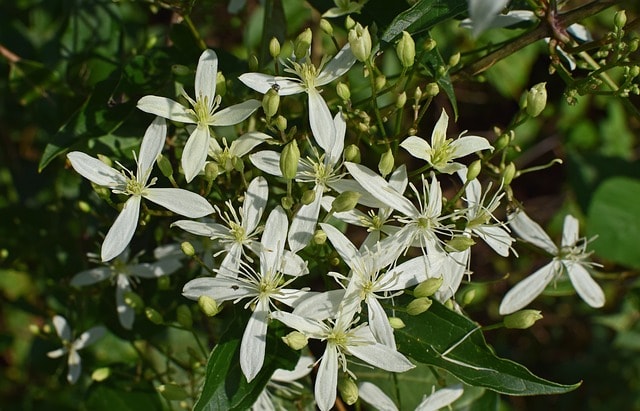
| USDA Zones: | 3 to 8 |
| Sun Needs: | Full sun to partial shade |
If you have partial shade, you may consider growing this beautiful plant. It flowers well in the shade (unlike most), so it is utilized where other vines don’t grow well. The flowers it produces are abundant and give off a nice scent, which is well-loved by most.
However, this vine can also be a bit tricky. Because of all the flowers, it produces lots of seeds. These seeds travel well and find themselves all over gardens and yards. It is easily invasive for this reason.
9. Trumpet Vine
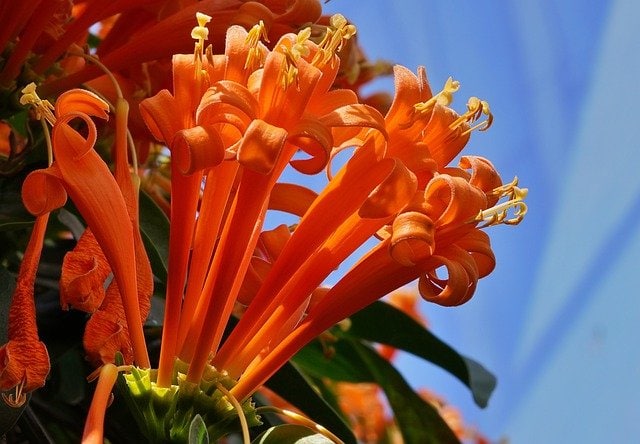
| USDA Zones: | 4 to 10 |
| Sun Needs: | Full sun to partial shade |
The trumpet vine produces extraordinary flowers even in partial shade. In fact, out of all the plants we’ve reviewed, trumpet vines are easily one of the showiest. Hummingbirds love it, so it can also be a good addition to a hummingbird garden.
However, this vine will send out seeds easily and efficiently. Therefore, you’ll often be up against an onslaught of tiny trumpet vines every spring.
Conclusion
We’ve included some of our favorite shade vines in this article. Some flower, while others do not. Some are slow-growing, while others are extremely prolific. Vines are typically pretty low-maintenance. However, many cannot simply be let go, or they will take over the whole garden.
Be sure to do your research and choose the best plant for your needs. Don’t forget to take a look at the zone information we’ve provided, as not all of these plants will grow everywhere. Plus, some are also hardier than others, so you’ll need to consider your soil type.
Featured Image Credit: victoria-strukovskaya, Unsplash
Contents
